Impressum: Michael A. Russ michael@tintones.com +4917672468738 © 2014 Michael A. Russ TinTone Productions LLC. All Rights Reserved
"Michaël RUSS pratique la sequénce avec un art éprouvé. Il s'agit d'un exercice de style qui nécessite imagination et rigueur technique"
Photo Reporter / France
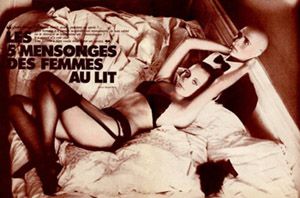
"...aujourd'hui le monde imaginaire qu'il aime. De délicates coloriages sur toile de fond sépia empreints, on ne sait, de quel irrésistible pouvoir de séduction ce degage.
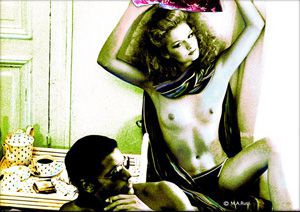
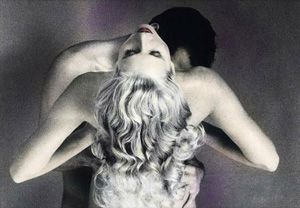
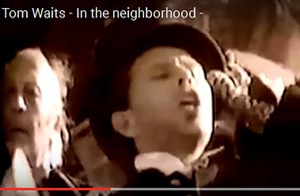
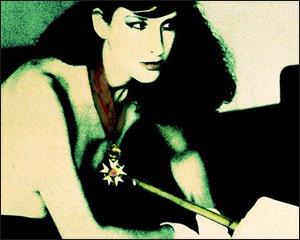
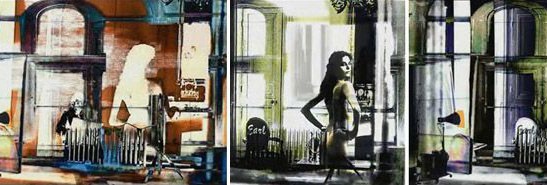
"MICHAËL RUSS OU LA BEAUTE DU GRAIN
Michaël Russ a pratiqué tous le moyens d'expression" Vogue Hommes
New York's fashion industry became Michael A. Russ's entry into the market as a professional photographer. In 1970 he moved into his own studio off Union Square, right around the corner from Andy Warhol's 'Factory'. 'Max's Kansas City' was the meeting place. This pulsating metropolisis with its vibrating art scene is the cultural medium for growth for an artistic entitlement.
From the beginning Michael Russ was inspired by his special affinity to motion pictures. Ever since his training in dance and theatre the medium film had become the center of his creative aspirations. He now devolved the sequential aspects of moving pictures to his photography. Thereby the staging of his productions played a major part - a process of elimination. His photos were not simply to be a copy of an image, but rather a metaphor for a story. He often staged his productions as meticulously as a director would stage the scene for a filmset using available light sources.
Eroticism, beauty and the allure of the female body, subtly and sometimes provocatively composed is the intended subject matter of his photography. Soon Michael displayed a very personal, distinctive style. Grainy black and white images, chemically toned, as though they come off the silver screen, became characteristic for his work. 'The still picture appearing in subtle motion'(Art Direction Magazine May 1973).
It is often a certain context that gives a special meaning to his compositions. His unconventional style is by now being noticed by the industry and he is able to cast top models, some of whom are also being photographed by Helmut Newton, whose work Michael appreciates. He is also influenced by the sequential work of Duane Michaels, who's studio he took over. Special inspiration he attributes to Man Ray. As with him, Paris soon became a landmark in Michael's artistic development.
In 1980 Vogue Hommes (F) labeled his portfolio presentation: Michael Russ or the beauty of grain'. His photographic style was thus established. He then spent considerable time experimenting in the darkroom developing graphic filmstrips and visual soundtracks to resemble snippets of motion picture film which were published as a sequence in Vogue Hommes.: L' initiative au feminin', using fashion as accessories.
The creative darkroom process now became a major post productive part to the actual idea of the picture sequence. As he had already started in NY, he continued experimenting with hand coloring his toned silver gelatin prints, which he called TinTones. The camera only delivered the primary material for a lengthy process of the actual final visual construction. Imagination becomes more significant than reality and perfection.
With a variety of creative means he approaches his initial conceptual idea which often results in a process of elimination - less is more. Adding hand coloring to his black and white, or chemically toned images lends a painterly aspect to the work. His grasp of paintings developed early on through the images of German expressionists like Kirchner, Beckmann and Dix. In his treatment of color, he especially admired Marc Chagall. It's the creative process of trial and error, of chance and of minimizing, in search of a valid message which dictates Michael's quest for being or pretense.
In early 1980's Los Angeles Michael Russ is one of the artists displaying avant-guardistic positions in photography. So it is not by chance that Tom Waits liked his 'Prussian Blue' exhibition at the original China Club and commissioned him to create the cover of his Island label record 'Swordfishtrombones' as well as Assoc. director/choreographer to the MV 'In the Neighbourhood' from that album, in order to give Tom Waits's new musical input a fresh look.
From the mid 90's on Michael Russ began integrating digital elements into his TinTone images, enabling him to create depth through layering, not only in a formal sense. Michael Russ's TinTones contain just about the entire spectrum of photographic technology from the invention of photography in form of Photo-grams through masking and solarization of chemically toned - one of a kind - silver gelatin prints. He experimented with various photographic techniques and printing processes in order to permit him to convey more than the pure two dimensionality of a photo print, by applying his TinTone techniques.
Since about five years ago these TinTones can now be produced as unique - one of a kinds - or small editions of up to seven, in a special Alu-Dibond industrial process. They react to light and the movement of the beholder in a very special manner. From each changed position of the viewer there also results the possibility of a varied perception and an interaction between the piece and the beholder. Thus Michael Russ has created expressive and inspiring images. Multifaceted in idea as well as in their visualization. They provoke the viewer into creating new interrelationships but give him space to freely construct his own interpretation.
